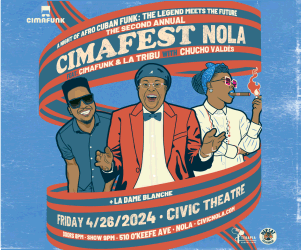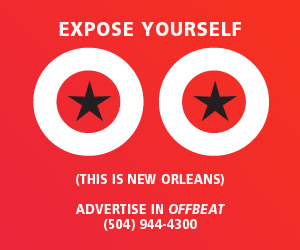Three veteran greats combine efforts on this recording for a back-to-basics album of blues-oriented material. In a classic jam session format, Art Blakey, Dr. John and David “Fathead” Newman join forces in a diverse and frolicsome encounter of three virtuosos.
Coming from three different musical backgrounds, the triumvirate finds common ground in the blues and milks it for all it’s worth. From swing to second-line, ballads to boogie, funk, modern jazz, honky-tonk…Blakey, Dr. John and Newman create a soulful spectrum of tunes.
In the spirit of a true jam session, the album was recorded in just two days, with the artists running through each number until they were comfortable with it. Producer Joe Ferry then caught the artists live without a lot of overdubbing to bring out the true spirit of the sessions.
All three brought material to the session. More notable tracks include Dr. John’s arrangement of “Shoo Fly Don’t Bother Me.” With a laid-back, second-line funk groove, the vocals are done as a call-and-response with Dr. John’s lazy, fuzzy phrasing answered by the tune’s refrain. Fathead plays a mean flute solo and the bass vamps on the groove for the last several minutes as Blakey and percussionist Joe Bonadio exchange licks, releasing the thunder they’ve been building up.
Other highlights include Newman’s “Heads Up,” a swing-blues reminiscent of Cannonball Adderley’s later material, and the modern jazz piece “Need To Be Loved,” which all three collaborated to write. It begins with a driving jazz-rock beat with a mean tenor saxophone melody and jumps into a cheerful bridge.
Fresh from a Grammy for a duet with Rickie Lee Jones, New Orleans’ own Dr. John continues to broaden his horizons with Bluesiana Triangle—an excellent candidate for another Grammy. His flare for blues shines through with some of his best piano work to date. Particularly impressive is his solo on “Heads Up.” With a blend of stride piano—the legacy of New Orleans piano—and hard-bop licks, the Doctor can swing with the best of ’em. He tears it up down and dirty on “Life’s A One-Way Ticket,” a slow honky-tonk style blues. He even returns to his original sessions instrument, the guitar, adding some tasty background rhythm to several cuts.
Other arrangements Dr. John brought to the session are the Dave Bartholomew/Fats Domino-style boogie “Next Time You See Me” and an arrangement of “When The Saints Go Marchin’ In.” Although the song has been driven into the ground in his hometown, Dr. John freshens it up with a slow Gospel intro leading into a minor blues, laid-back, funk groove so typical of his material from the ’70s.
Drummer Blakey is no stranger to what New Orleans has to offer. He has almost single-handedly lifted modern Crescent City jazz out of its boundaries and re-introduced it to the world. Through his band, the Jazz Messengers, he introduced the world to Wynton and Branford Marsalis, Donald Harrison and Terence Blanchard. For three decades, the Messengers have been at the forefront of the jazz world, graduating other luminaries such as Wayne Shorter, a co-founder of Weather Report, Freddie Hubbard and Horace Silver from its ranks. Blakey’s cohorts read like a veritable who’s who in jazz and include the likes of Dizzy Gillespie, Thelonious Monk and Charlie Parker, to name but a few.
Blakey’s fleet be-bop drumming provides the drive and energy behind the songs. With busy bands, he still manages to play with subtlety, rising and falling with the dynamics, playing with the reserved energy of a pressure cooker, always ready to burst, but saving his release for the right moment to bring on the thunder. With percussionist Joe Bonadio, the two interplay on several rousing solos for some down-home funk.
Blakey even tries his hand at singing while playing his original instrument, the piano, on the standard ballad “For All We Know.” His voice is gruff and gritty but sincere, much like Mr. Charisma himself, Louis Armstrong.
Completing the trio on tenor sax is Newman, a veteran of the music world for over 50 years. Originally a be-bop jazz performer, Newman turned to R&B to survive professionally and became a dedicated bluesman after playing with Ray Charles, with whom he toured for a decade.
Newman’s “Heads Up” stands as one of the album’s masterpieces. Besides his masterful tenor work, he also plays a ballsy flute solo on “Shoo Fly” and shows off his impressive chops on soprano saxophone.
Complementing the trio are two young New York session and club regulars, percussionist Joe Bonadio and bassist Okon Essiet.
For the relatively young Windham Hill Jazz label, this album offers a fresh and powerful perspective of the blues genre, which some might feel has stagnated. This group has breathed new life and excitement into the music while remaining true to their roots. Bluesiana Triangle is an excellent and diverse collection from an equally excellent and diverse group of musicians who came together to celebrate the styles they know and love so well.




